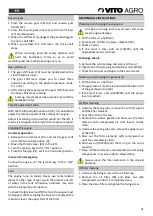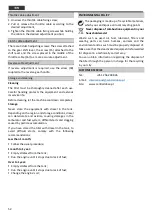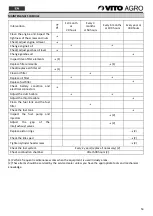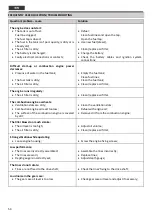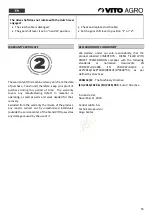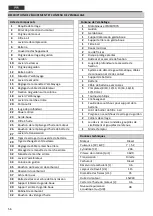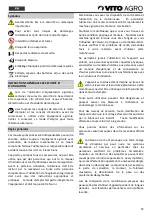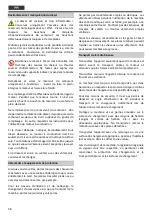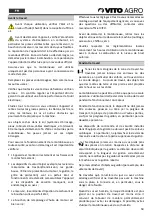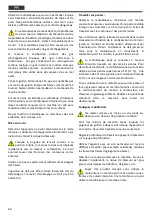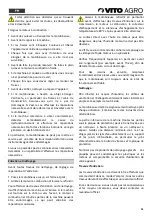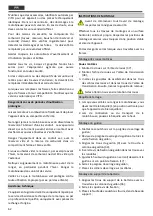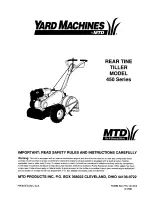
47
Hold the handlebar firmly, so your hands don't get off
the handlebar when the tines start rotating. Pay special
attention when doing a reversing maneuver.
In rough or stony soil, the user must work with the
engine at low speed. The tiller will tend to be less stable
than on cultivated soil.
Do not start the tiller on asphalt floors, tiles, etc.
Start-up:
Switch on the appliance carefully following the
operating instructions. Using the tiller according to
these instructions reduces the risk of injury.
When the starter cord returns to its original
position, the hand and arm are moved quickly
towards the combustion engine. This pullback could
cause fractures, bruises and sprains.
Make sure your feet are far away from the tines.
The appliance must not be tilted when switching it on
and the clutch lever must not be engaged.
Working on sloping terrain:
Keep a constant pace and always ensure a stable
posture when working on sloping terrain. Avoid working
with the tiller on steep slopes.
On sloping terrain, always work moving the tiller
transversally having in consideration the terrain
inclination; never the opposite, going up or down
directly on the slope. The user must never stand in a
position below the running tiller. If the user loses
control, he could be run over.
The tiller can turn upside down when working on
steep terrains. For safety reasons, the diesel tiller
may not be used on slopes with an incline of more than
10° (17 %). A 10° incline is equivalent to a vertical climb
of 17 cm on a horizontal length of 100 cm.
If the appliance is being used on slopes, information
regarding the use of the combustion engine must be
observed in order to ensure proper lubrication. Reduce
the amount of fuel in the tank to avoid spillage.
Operating instructions:
Never place your hands or feet over or under the
rotating parts;
For safety reasons, always hold the handlebar grips with
both hands while the tiller is running. Never work with
one hand only.
Adjust the working depth just by pressing the depth
gauge.
Use the machine with special care on hard to work soils
(e.g. stony or rough), reduce the speed of the tines
(speed adjustment).
Only operate the appliance keeping a steady walking
pace, never run while working with the tiller. If you
attempt to operate the tiller at a fast pace, you risk to
stumble, slip, etc.
When reversing the tiller, be aware and make sure
that there is a large distance between the tines and
the feet when pulling the tiller or reversing.
When reversing, pay attention to the obstacles
behind in order to avoid falls, unbalancing and
crushing.
Turn off the combustion engine:
▪
Before lifting and transporting the device;
▪
Before you carry the tiller;
▪
If the tines get stuck. Lift and free the tiller with the
help of someone else;
▪
Whenever you intend to move away from the tiller or
if it is not under watch;
▪
Before refueling the tank. Only refuel when the
combustion engine is cold;
▪
If the appliance is pushed or pulled into an area that
is not intended to be worked;
▪
Whenever you have to adjust or assemble the blades;
▪
Before the equipment is inspected, cleaned or before
a repair work is carried out;
▪
If it hits a foreign object; Check the appliance,
especially the tines and the drive shaft. Make sure
there is no damage. If any, carry out the necessary
repairs before turning on the tiller and working with
it;
▪
If the tiller vibrates excessively and abnormally.
Detect the cause of the malfunction immediately and
make the necessary repairs. Strong vibrations
generally indicate a malfunction;
The tiller must not be operated with a bent drive shaft
or damaged farming attachable equipment.
If you lack the necessary knowledge, ask a professional
to make the necessary repairs.



















